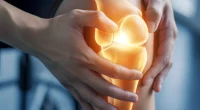Anorectal cancer
What is anorectal cancer?
Anorectal cancer is a cancer in which a malignant tumor forms from the epithelial tissue of the lower rectum (between the upper edge of the anorectal line and the transition of the anoderm to the perianal skin).
Cancer of the anus, or anal canal, is considered a rare disease. The frequency of diagnosis is 1-6% of all colorectal cancer cases. Pathology is detected predominantly in people over 60 years of age and in women seven times more often than in men. About 80% of malignant tumors of the anus are represented by squamous cell cancer, and up to 15% – of adenocarcinomas develop from glandular tissue.
Stages of anal canal cancer
Based on the size and degree of spread of the tumor, the following stages of anus cancer development are distinguished:
- Tis – preinvasive cancer (the tumor affects only the epithelial layer; the basal lamina is intact);
- T1 – tumor up to 2 cm in diameter;
- T2 – the diameter of the neoplasm is 2-5 cm;
- T3 – tumor size exceeds 5 cm;
- T4 is a large tumor that grows into surrounding organs (vagina, urethra, bladder), except perianal skin and tissue, anal sphincter.
Depending on the presence of metastases in the regional lymph nodes, the following stages of cancer are distinguished:
- N0 – no metastases;
- N1 – lymphatic structures close by (sacral, anorectal) are involved;
- N2 – iliac and/or inguinal nodes are involved;
- N3 – bilateral involvement of all lymph nodes.
Marker M0 means no metastases to distant organs and lymph nodes, and M1 indicates the presence of secondary tumors in distant areas.
Symptoms
Nonspecific symptoms of rectal pathology accompany the early stages of the disease:
- discomfort in the anus;
- foreign body sensation;
- itching in the anus area;
- blood in the stool;
- mucous or purulent discharge from the anus.
If the tumor spreads to the surrounding tissues, there may be dysuric disorders (pain during urination, frequent urges), discomfort during sexual intercourse, and pain in the pubic area and coccyx. In advanced cases, there are signs of intoxication (weakness, drowsiness, subfebrile, and nausea) and disorders in the work of internal organs (depending on the specifics of the spread of metastases).
Reasons
The exact causes of anal canal cancer have not been established. The following conditions are considered risk factors:
- family history of colorectal cancer;
- age over 50;
- human papillomavirus;
- regular constipation;
- benign masses in the anus area (prone to malignant transformation);
- chronic diseases of the anus (hemorrhoids, anal fissure, proctitis);
- overweight;
- trauma to the anal canal.
A certain role in the development of the disease plays an irrational diet, especially associated with fiber deficiency.
Diagnosis
The initial examination for anal canal pathology involves palpation of inguinal lymph nodes, visual inspection of the anus area to assess the skin condition, and rectal finger examination. Subsequently, the patient is prescribed a sigmoidoscopy or colonoscopy with biopsy. To assess the degree of tumor spread, ultrasound, CT, MRI of internal organs, and puncture biopsy of lymph nodes are performed. General and biochemical blood tests and tests for oncomarkers (SCC, REA, CA-19-9) are also performed.
Treatment for anorectal cancer
Treatment tactics are selected personally for each patient, taking into account the stage of cancer development, anamnesis, and the presence of concomitant diseases. Conservative methods and surgical methods are used in complex treatment. By international standards, preference is given to non-surgical methods.
Conservative treatment
Anal canal cancer is sensitive to chemoradiotherapy. Remote, intracavitary, and intrathecal radiotherapy is performed in combination with thermal treatment, which increases the effectiveness of treatment many times over. Among chemotherapeutic protocols, low-dose chemotherapy is the most acceptable.
Surgical treatment
Surgical treatment is indicated in early stages of cancer (cases without sphincter involvement), in large tumors, purulent-necrotic complications, as well as in recurrence of anal canal cancer after chemoradiation therapy. In the process of surgery, the rectum with surrounding tissue is removed, and if necessary, lymphadenectomy is performed. A permanent colostomy is established for fecal discharge.
All these treatment options are available in more than 850 hospitals worldwide (https://doctor.global/results/diseases/anorectal-cancer). For example, Abdominoperineal resection (APR) is performed in 25 clinics across Turkey for an approximate price of $9.8 K (https://doctor.global/results/asia/turkey/all-cities/all-specializations/procedures/abdominoperineal-resection-apr)
Prevention
Preventive measures that help to reduce the likelihood of developing anus cancer include avoidance of bad habits, rational nutrition, timely seeking help, and treatment of rectal diseases. It is recommended to be selective about sexual relations and use barrier contraception methods during sexual contacts. It will help prevent infection with HPV and herpesviruses, which are potentially oncogenic.
Rehabilitation after surgical treatment
In the postoperative period, the patient is monitored in the hospital for 5-7 days. The patient receives drug therapy, goes to dressings, and follows a diet. After discharge for 2-3 weeks, the doctor must monitor regularly the recovery process. In the future, it is mandatory to be examined in 3, 6, and 12 months, and further as indicated.
Advancements in Treatment
- Recent advancements in the treatment of anorectal cancer include:
- Improved surgical techniques for better preservation of function.
- More effective chemoradiation protocols.
- Development of targeted therapies and immunotherapies.
Conclusion
Anorectal cancer, encompassing both anal and rectal cancers, requires a multidisciplinary approach for effective management. Advances in surgical techniques, chemoradiation, and targeted therapies have improved outcomes and quality of life for patients. Early detection remains key, and ongoing research continues to offer hope for even better treatment options in the future.



